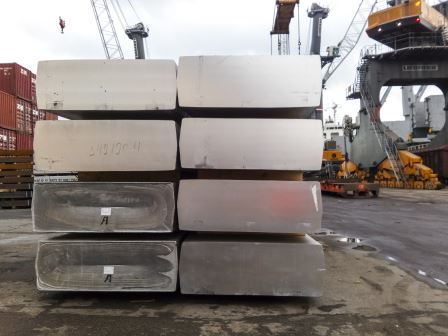 Thought the story of Indian commodity derivative trading started as early as 1875, only after the setting up of national level commodity exchanges, commodity derivative trading turned more proactive. The sector had faced many challenges that resulted in framing a strong regulatory framework for commodity trading in the country. In India, working of exchanges are strictly under the guidelines of SEBI, who is the watchdog of Indian stocks and commodity market.
Thought the story of Indian commodity derivative trading started as early as 1875, only after the setting up of national level commodity exchanges, commodity derivative trading turned more proactive. The sector had faced many challenges that resulted in framing a strong regulatory framework for commodity trading in the country. In India, working of exchanges are strictly under the guidelines of SEBI, who is the watchdog of Indian stocks and commodity market.
Currently, under the three national level exchanges, there are more than 115 commodities permitted for trading, out of which only about 50 are active. The Multi Commodity Exchange of India (MCX) claims the primary position with respect to trade volume. Though MCX offering futures trading in agriculture commodities, large volume has been generated through non-agriculture commodities like bullion, energy and base metals complex.
In bullion, different periodicity and specification contracts of gold and silver is available for trading. Gold for 1KG futures contract is the most active one having delivery centre at Ahmedabad. Gold-mini and Guinea contracts are also available for trading, primarily focusing retail investors. In silver, 30kg and 5kg contracts are available for trading with Ahmedabad delivery centre. Normal margin for trading in bullion contracts is between 4-6 percent. MCX bullion contracts are directly correlated with the U.S COMEX futures.
In the energy complex, Crude oil and Natural gas contracts are available for trading. For Crude oil, 100 barrels is the contract size while natural gas is 1250 mmbtu. No physical delivery is available for these derivatives. Both are settled in cash at its respective expiry dates. The international counterpart for these commodities are crude oil and natural gas futures on the NYMEX in U.S.
The other major trading group in MCX is base metals which includes, Copper, Nickel, Lead, Zinc and Aluminium. Contract size for Copper is 1 MT while Zinc, Lead and Aluminium is 5MT. At the same time, contract size of Nickel is 250KG. For all these commodities, mini contracts are also available for trading.
The National Commodities and Derivative Exchange (NCDEX), which is located at Mumbai, offers trading in several agriculture commodities. Though non-agriculture commodities like bullion and energy is also available in this platform, trading volumes are negligible. Tradable commodities in this exchange includes oil-seed complex, spices, cereals & pulses, plantation crops etc. Guar seed and Soy bean are the top two volume generating commodities in NCDEX platform. As against the non-agricultural commodities, most of the agriculture commodities are available for physical delivery.
In NCDEX, most monthly contracts usually expires on 20th of every month. The staggered delivery period will be starting ten days prior to the delivery date. Normally, the delivery centre is located near to the major spot market. For example, the major spot market for Jeera is at Unjha, Gujarat and it is the primary delivery centre for the commodity. However, Jodhpur in Rajasthan is also a delivery centre.
National Multi Commodity Exchange (NMCE) is another main national level exchange located at Ahmedabad. Natural rubber is the most actively traded commodity on NMCE. RSS4 grade is the standard quality available for trading with delivery centres at Kochi, Kottayam, Trichur, Calicut, and Malappuram. TOCOM (Tokyo commodity market) rubber futures act as the benchmark international future market for rubber.
For initiating trading through exchange, one can begin trading by paying initial margin which usually varies between 4-8%. Exchanges may charge extra/special margin as and when markets are volatile. Delivery margin is applicable, usually at higher level, during staggered delivery period.
Posted: February 2018








